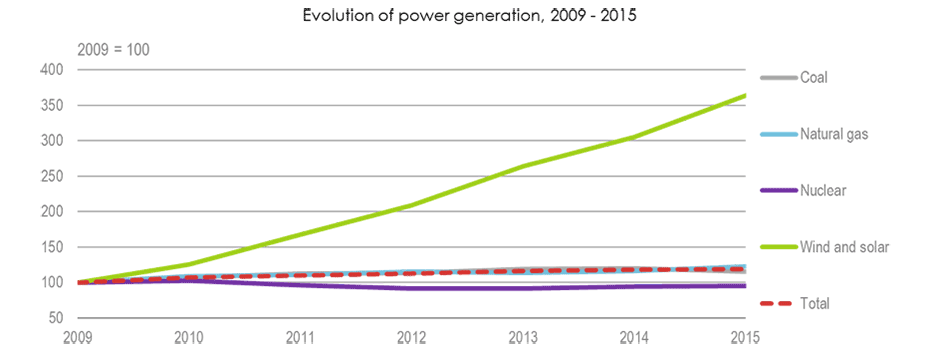
While electricity demand growth is slowing in many countries around the world, the deployment of renewable power generation continues to grow dramatically. In fact, over the next five years, renewables are expected to remain the fastest-growing source of electricity generation worldwide. This undeniable success of renewable energy – and particularly the success of solar PV and wind – has started to change the face of the power sector.
Yet the success of renewables, driven in part by continuing and dramatic decline in the price of wind and solar PV technologies, is precipitating a need for power system transformation in many jurisdictions. This is because the integration of high shares of variable renewable energy (VRE) such as solar PV and wind is not a simple task. This is due to the unique technical and economic attributes of VRE as well as the complex nature of the power system itself. The large-scale uptake of VRE also challenges traditional policy, market and regulatory frameworks regardless of market structure, whether they lean towards competitive markets or towards more vertically integrated utility models.

Without taking appropriate action, this complexity can act as a brake as countries seek to add ever larger shares of VRE to their power systems. If a power system is operated on the last century’s technologies and market frameworks, investors may hesitate to add more variable renewables. Undertaking this difficult power system transformation means better understanding what steps need to be taken.
The experience gained in many countries over the past decades have brought to light numerous measures to effectively design and operate power systems that can integrate increasing amounts of VRE while ensuring the cost effectiveness and reliability of the power system. These measures range from advanced technological solutions and improved planning practices to policy and market mechanisms.
To be sure, not all measures will work for all countries. There are significant differences across power systems in terms of the structure of electricity markets, physical infrastructure, and regulatory mechanisms, among other aspects.
Despite this diversity, a number of principles are emerging that encompass measures to enable successful integration of renewables, including improved power system operation and planning, and updated policy, regulatory and market frameworks. Using these principles as a basis, a new edition of the Status of Power System Transformation Report, produced by the IEA in collaboration with the 21st Century Power Partnership and the National Renewable Energy Laboratory (NREL), provides a series of concrete examples and best practices that have already been implemented throughout the world.
The report also presents an assessment framework to measure power system transformation across a wide variety of jurisdictions. The framework examines four aspects relevant to power system transformation: markets and operations; planning and infrastructure; uptake of innovative technology; and efficiency and sector coupling.
Four case studies – Indonesia, South Africa, Mexico and Australia – capture the diversity of contexts and drivers for power system transformation. Indonesia, for example, represents a rapidly growing power system where affordability and energy access are primary drivers. Australia, on the other hand, has seen stagnating electricity demand and volatile wholesale electricity prices.
The report provides policymakers an understanding of what changes are taking place today in countries around the world, and presents a valuable framework in determining the next steps in their own planning and investments, as they take the necessary steps towards building out a 21st century power system.
Source: © 2017 OECD/IEA

